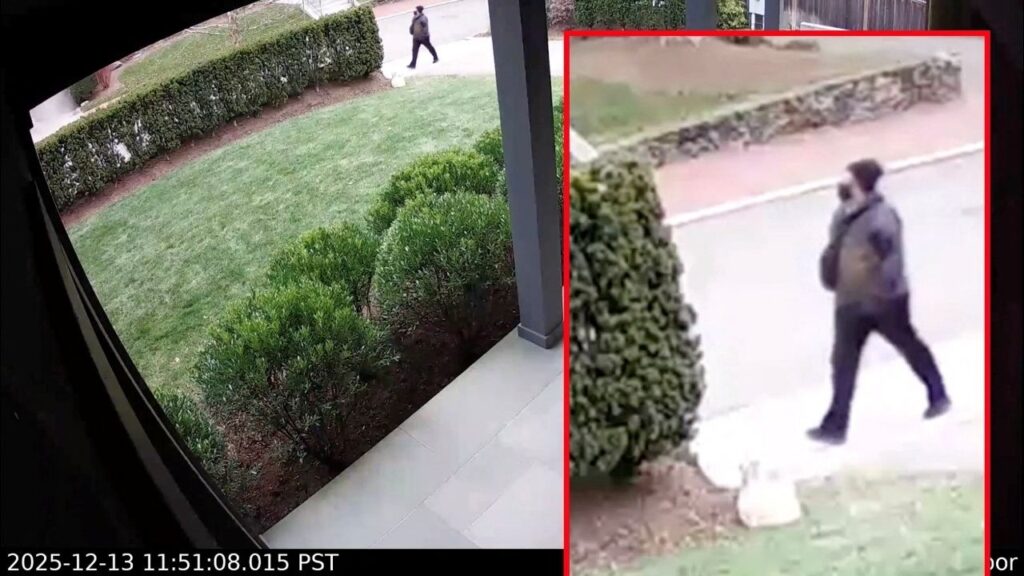The Fresno County Sheriff's Office is intensifying promotion of its Targeted Violence Prevention Task Force, which uses an online tool to report and prevent potential school shootings and other violent threats through community collaboration and a comprehensive five-pronged approach. (Composite by Paul Marshall/Video by Jahziel Tello)

- Fresno County’s Targeted Violence Prevention Task Force, active since August 2023, is increasing efforts to address school threats following recent incidents.
- The task force uses an online system with 18 questions to evaluate potential threats and notify authorities, focusing on preventing violence before it occurs.
- The warning signs like vague threats or suspicious behavior online, stressing the importance of early intervention to prevent violence.
Share
|
Getting your Trinity Audio player ready...
|
The Fresno County Sheriff’s Office is ramping up efforts to promote the Targeted Violence Prevention Task Force in response to the recent Apalachee High School shooting in Georgia and other local high school threats.
The task force, established in August 2023, operates through an online tool called the Targeted Violence Early Warning System, which allows individuals to report behaviors that may lead to targeted violence, such as school shootings. The task force works closely with the Fresno County Superintendent of Schools, King View Crisis Intervention, and county Department of Behavioral Health, as well as schools and human resources departments in the private sector.
Sheriff’s Capt. John Reynolds, who oversees the task force, spoke Thursday, emphasizing, “This is not a school problem, this is a community problem.”
Reynolds says the task force employs a five-pronged approach that stops targeted violence before it happens through education, reporting, triage, investigation, and multi-disciplinary threat assessment. He said the task force “aims to stop the violence before it even happens in the first place.”
The task force has handled seven cases and investigated 14 incidents, working with schools to address potential violence. While not an arresting unit, the task force collaborates with resource officers and schools to intervene in potentially dangerous situations, including enforcing measures like backpack restrictions or regular searches.
How Does the Online Form Work?
When a report is submitted through the online form, it triggers a process designed to address potential threats. If the report indicates an imminent threat or danger to lives, the system immediately advises the reporter to call 911.
The system consists of 18 questions, including one allowing anonymous reports. The questions are designed to assess the severity of the threat and alert authorities if necessary. All reports are reviewed by the task force, regardless of urgency.

“This is not a school problem, this is a community problem.” — Capt. John Reynolds
Questions also probe if the individual has developed a plan for violence or taken steps toward carrying out such a plan, like acquiring weapons or conducting surveillance. If an individual has acquired a weapon, a red alert email is triggered to notify the investigative team, crime analysts, and unit commanders.
The form additionally inquires about past suicide attempts, which raise the urgency of the investigation due to the heightened risk of violence. And, it seeks information on any communication about potential threats, social media usernames, and interest in past attacks.
Notable details include unhealthy preoccupation with a person or cause, any history of bombings, assaults, or animal cruelty. Each can signal a troubling pattern of behavior.
The form finally asks if there are other concerns not covered in the previous questions and requests the reporter’s contact information for follow-up. This comprehensive approach ensures that all relevant information is captured to assess and address potential threats effectively, Reynolds said.
This system is not a variant of Valley Crime Stoppers. Its primary focus is on preventing violence before it occurs. Other crime prevention tools should still be utilized alongside this system.
What to Look Out For?
Reynolds outlined key behaviors that should raise concern and be reported to the task force. These include individuals displaying violent ideation, fixating on a grievance, or acquiring weapons with suspicious intent.
He emphasized “leakage” as a critical warning behavior.
“It’s the things we call leakage, warning behavior where it’s a vague comment, a vague warning intended or unintended of an event to come like, ‘Hey, don’t come to school on Friday.’ Why?” Reynolds said.
“People are afraid to ask that question — why? It’s that vagueness and those conversations that are occurring that typically don’t get reported until after the fact and somebody says, ‘Wow, that meant something.’ That’s what we’re looking for.”
“Warning behavior where it’s a vague comment, a vague warning intended or unintended of an event to come like, ‘Hey, don’t come to school on Friday.’ Why? People are afraid to ask that question — why?” — Capt. John Reynolds
He added that most mass shootings, including Columbine, had warning signs.
“There is leakage that takes place on social media, YouTube channels, Discord channels, gaming channels, where somebody will say, ‘I’m going to be the next school shooter,’ or ‘I’m planning a school shooting.’ And they’re just saying that information where other gamers or people might ignore it, thinking, this is just a joke. Maybe not.”
While owning a firearm is not a concern for the sheriff’s office, researching prior violent incidents or making threatening comments can be red flags. Other warning signs include drastic behavior changes, such as giving away belongings or expressing no plans for the future.
More information on preventing school violence is available at this link.

When Does it Turn From a Meme to a Threat?
Reynolds explained that online threats become credible when a grievance or violent ideation escalates into planning and weapons acquisition.
He noted that while anger or disappointment is normal, the situation changes when individuals begin researching methods used by previous attackers or strategizing ways to bypass security.
He said the task force intervenes when these behaviors are recognized, either through social media or reports from bystanders. Early grievances may be monitored, but once research or weapons acquisition begins, it prompts immediate action from authorities.
How to Report?
If you are aware of behaviors that could lead to future crime, call the non-emergency line at (559) 600-3111 for guidance if the situation is not imminent. A sheriff’s deputy will assist with the next steps.
For more information or to make a report, visit the Targeted Violence Early Warning System online.
Fresno County residents are encouraged to stay alert and engaged, as their vigilance is vital in protecting schools and communities from violence, Reynolds said.
And, remember: Knowingly making a false police report is a crime.
———
Connect with Anthony W. Haddad by email or on social media.
RELATED TOPICS:
Categories


















